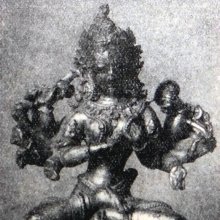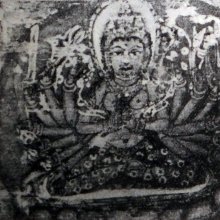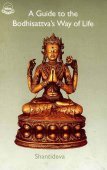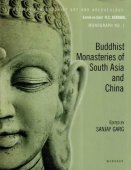Autumn: 2 definitions
Introduction:
Autumn means something in Hinduism, Sanskrit, the history of ancient India. If you want to know the exact meaning, history, etymology or English translation of this term then check out the descriptions on this page. Add your comment or reference to a book if you want to contribute to this summary article.
Images (photo gallery)
In Hinduism
Shilpashastra (iconography)
Source: Shodhganga: Elements of Art and Architecture in the Trtiyakhanda of the Visnudharmottarapurana (shilpa)1) The Autumn Season follows specific guidelines in the tradition of ancient Indian Painting (citra), according to the Viṣṇudharmottarapurāṇa, an ancient Sanskrit text which (being encyclopedic in nature) deals with a variety of cultural topics such as arts, architecture, music, grammar and astronomy.—Every season has its own peculiarities and charms. The seasons (e.g., Autumn) always encourage the painters to grab different ideas from the nature. The Viṣṇudharmottarapurāṇa also gives some instructions to make the picture of every season beautiful and natural. The autumn season (śarat), the trees are filled with fruits and fields are filled with crops. Taking the fullness of nature as a theme, in the Viṣṇudharmottarapurāṇa, the portrait of the autumn season is prescribed to be depicted with the picture of the earth covered with the plants full of fruits and the fields filled with plenty of ripe grains. Moreover, the picture of the autumn season should include the water-ponds along with lots of swans and lotuses.
2) The Autumn (complexion) is associated with the Bhadra classification of men, defined according to the principles of ancient Indian Painting (citra). According to the Viṣṇudharmottarapurāṇa, there are five types of men viz., the Bhadra type, [...]. The rucaka type of man bears the white complexion like autumn and he has a conch shaped neck.

Shilpashastra (शिल्पशास्त्र, śilpaśāstra) represents the ancient Indian science (shastra) of creative arts (shilpa) such as sculpture, iconography and painting. Closely related to Vastushastra (architecture), they often share the same literature.
India history and geography
Source: Brill: Śaivism and the Tantric Traditions (history)Autumn refers to the season when in ancient India armed campaigns would take place.—The season of autumn, which in many cultural traditions, and also in classical India, was when armed campaigns would take place, must also have formed a reason for the presence of military rituals such as the lustration of weapons and war-animals during Durgā’s Navarātra: following the monsoon, during which it is notoriously difficult to make journeys, the autumn, when the skies are clear and the weather cooler, formed the perfect season to venture forth on campaign.

The history of India traces the identification of countries, villages, towns and other regions of India, as well as mythology, zoology, royal dynasties, rulers, tribes, local festivities and traditions and regional languages. Ancient India enjoyed religious freedom and encourages the path of Dharma, a concept common to Buddhism, Hinduism, and Jainism.
See also (Relevant definitions)
Starts with: Autumn adonis, Autumn coralroot, Autumn crocus, Autumn elaeagnus, Autumn maple tree, Autumn olive, Autumn onion, Autumn zephyr lily.
Full-text (+250): Sharada, Sharad, Ghananta, Sarat, Sharatkala, Phalagama, Ghanatyaya, Sharadija, Meghanta, Shatasharada, Sharadvadhu, Varshasharad, Kalaprabhata, Sharatparvan, Sharadanta, Purvasharada, Karttika, Varshavasana, Parinatasharad, Sharadvant.
Relevant text
Search found 159 books and stories containing Autumn; (plurals include: Autumns). You can also click to the full overview containing English textual excerpts. Below are direct links for the most relevant articles:
Sankhayana-grihya-sutra (by Hermann Oldenberg)
Khadira-grihya-sutra (by Hermann Oldenberg)
Asvalayana-grihya-sutra (by Hermann Oldenberg)
Paraskara-grihya-sutra (by Hermann Oldenberg)
Hiranyakesi-grihya-sutra (by Hermann Oldenberg)
Satapatha-brahmana (by Julius Eggeling)
Kāṇḍa XI, adhyāya 5, brāhmaṇa 1 < [Eleventh Kāṇḍa]
Kāṇḍa I, adhyāya 5, brāhmaṇa 3 < [First Kāṇḍa]
Kāṇḍa VIII, adhyāya 1, brāhmaṇa 2 < [Eight Kāṇḍa]
Related products







